The Humanist Legacy Of Keiko Nobumoto
by Bella B,It's difficult to trace each root of influence that leads back to Keiko Nobumoto.
Over her three-decade-plus writing career, Nobumoto blazed trails in anime, film, gaming, and even published fiction. Though her bibliography is deceptively short, every major production she lent her talents to became a titan in its own right, and helped move the needle of both animated and interactive fiction. Her words were at the hearts of those productions, guiding and driving other creatives to bring her worlds and the characters in them to life.
Nobumoto learned from the best in the business. In 1987, she graduated from Takao Koyama's Anime Scenario House, where she studied under the Time Bokan and Dragon Ball Z luminary. Later contributing to hits such as Sailor Moon and Galaxy Angel, a hallmark of Koyama's writing is normalizing fantastical situations through deep characterization and dialogue. Likewise, the influence of Koyama's character-driven, humanistic style of writing can be seen in many of Nobumoto's works. Her scripts often depict the most far-flung scenarios imaginable, but rarely get lost in the narrative weeds due to her keen eye for grounded, human characters.
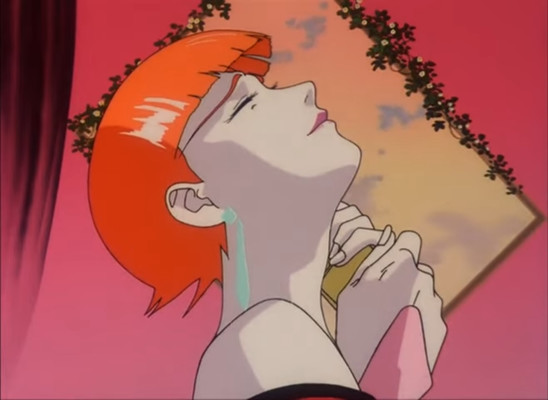
This is exemplified in 1994's Macross Plus – Nobumoto's first of many collaborations with Shinichirō Watanabe. Plus was a soft reset for the then decade-old mech series, both in terms of style and tone. Nobumoto's script took hallmarks of the franchise and turned them on their head, instilling the “mecha meets idol” series with an anti-capitalist streak barely present in the original. Her Macross is also an explicitly feminist one, preoccupied with the ways capitalism commodifies women, as well as the reductive roles they're often forced to play as men fight and kill in their name during wartime. It's a sobering entry focused on a small-scale conflict, and one that set a tone series creator Shōji Kawamori would later build on with Macross Zero. Plus, it could be argued that Nobumoto predicted the rise of Vocaloids and Vtubers with malevolent hologram pop star Sharon Apple.
It would be five years until the release of Watanabe and Nobumoto's next collaboration, Cowboy Bebop. As the project languished in development hell thanks to its perceived lack of marketability, Nobumoto penned Those Were The Days (Hakusen Nagashi), a romantic drama centered around two erstwhile Hokkaido teenagers. The series (co-written by Yūki Harada) proved popular enough to spawn multiple television specials and a novel, all written by Nobumoto. Generally regarded in the West as a minor work for the creator, Days speaks to the grounded nature of Nobumoto's narratives in its complete lack of futuristic or fantastical elements. At the core of her scripts are complex and flawed human beings, not convoluted lore or ideological figureheads, and Days exemplifies that.
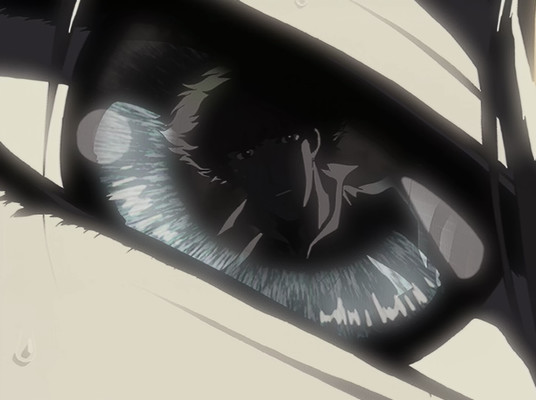
That human eye informed much of Cowboy Bebop, once Bandai Visual took over production and kicked the project back into high gear. Nobumoto handled series composition duties, and charted out the narrative course for Spike, Jet, Faye, et al. alongside Watanabe and the Sunrise crew. Unlike the four-part Plus, Nobumoto didn't pen the script for every episode, and instead worked together with a team of nine writers to bring the show to life. This process, though common in longer series, is very much in the spirit of Nobumoto's own writing and seeming intent. One of the reasons Bebop works so well is the askew structure that grew from the process, which eschews typical serialized space opera storytelling in favor of a “problem of the week” approach – like a hard-boiled, less imperialist Star Trek.
That structure is classically Nobumoto in how it centers human voices over exposition and world-building. Though she penned nine episodes (including the two-part finale,) and though her composition is the series' narrative backbone, Nobumoto's humanism is exemplified by just how much of her world is given to us through other writers. Each Bebop scribe has a unique flavor to their work, from Dai Satō's slower, cerebral episodes to Michiko Yokote's more pulse-pounding, off-the-wall ones. The combination of those radically different yet complementary flavors is what makes Bebop stand out, as a more structured, detail-oriented approach would have likely made the series indistinguishable from its contemporaries. But it's the overall adherence to Nobumoto's character-driven writing philosophy that brings all of those disparate parts together into a sublime whole. The humanist inclinations of her composition frame and contextualize each writer's contributions, which results in a show filled with characters as multi-faceted as the writing process that birthed them.
Indeed, Nobumoto credited that complex, character-first approach when speaking on Bebop's success. “One thing is, everyone has all sorts of facets to who they are,” Nobumoto told ANN in 2018. “In your entire life, there are different times in the day where you change. In regards to the director, we kept telling them that are three dimensions and to address those different aspects.”
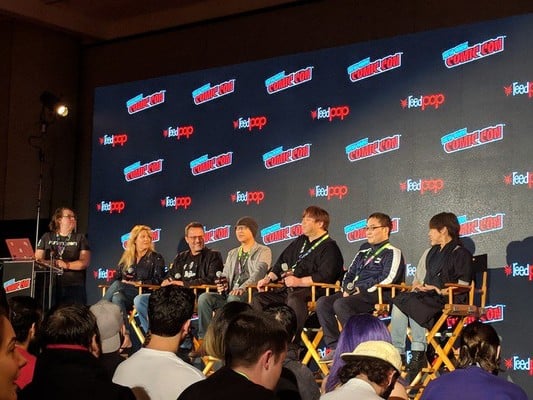
In the same interview, Nobumoto elaborated on Bebop's characters, and the driving impetus behind their creations. “Director Watanabe's rhetoric was, 'let's make something we want to see,'” recalled Nobumoto. “Our target audience was not kids, but ourselves and our peers. The truth is that kids want to watch what adults are watching. And so, that was perhaps one of the reasons why it attracted a broad audience.”
Bebop's influence on the anime industry is well-documented, and doesn't need to be rehashed when remembering Nobumoto's oeuvre. But that influence isn't solely due to aesthetics and soundscapes. Without a character-driven composition guiding the team, one open to creative input and collaboration, the show would likely have fizzled out amongst the stars of all the other late '90s anime about space travel.
“I have to say,” Nobumoto once mused, “I am still not sure what a ‘series compositor’ does. But if Spike said something that he wouldn't say, I'd be the one to say it wasn't right.”
After Bebop, Nobumoto would go on to write the series' movie interquel, Knockin' on Heaven's Door, before turning her focus to one of her biggest projects: co-writing Satoshi Kon's Tokyo Godfathers. Kon was so impressed by Nobumoto's work that he had previously asked her to help pen his 1997 psychological chiller Perfect Blue, but was turned down due to her workload from Bebop. The two had previously worked on Katsuhiro Ōtomo's 1991 film, World Apartment Horror.
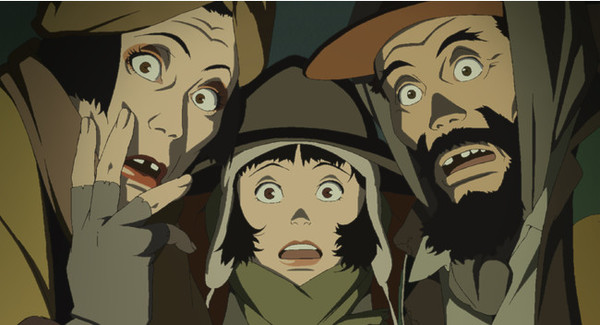
Tokyo Godfathers could be considered a departure for Nobumoto, considering Plus and Bebop established her place as a sci-fi anime scribe. But in truth, Kon saw the writer's work for what it was: personality-driven, dialogue-rich, and with an emphasis on character development. These three hallmarks are at the core of Godfathers, which Kon stated was a “character play” – intended to focus less on plot progression and more on the characters' state of being.
“In the joint script, we welcomed Keiko Nobumoto, a drinking friend,” Kon joked to a Japanese magazine in 2002. “No, no, wait… [she wrote] Hakusen Nagashi and the anime Cowboy Bebop. The personality of Nobumoto-san, who creates characters with a warm and gentle look, and I, who likes tricky and cowardly material and composition, blend well.”
He continued. “It's a character play. So far, the previous two works were produced and cut to emphasize on the progress of the story rather than the character. Or rather, due to various restrictions, I had to. But in the new work, I make scenarios and storyboards with an emphasis on things like the reality that the character is there.”
This reality-driven approach is what makes Tokyo Godfathers such a ubiquitous movie, almost two decades later. Kon's lush and fluid animation, meticulously storyboarded as ever, wasn't being used to depict a pop idol's descent into psychosis or tell a dying actress' psychedelic life story. Instead, much of Godfathers lingers on the facial movements and physical mannerisms of its houseless protagonists. Produced at a time when Japan's homeless population began to face increased systemic brutalization and stigmatization, the film is a defiant protest against dehumanizing said population. Together with Kon, Nobumoto argued that a runaway who stabbed her parent, a trans woman with a penchant for stretching the truth, and a drunk that abandoned his family were just as heroic and worthy of respect as more “conventional” mid-aughts protagonists. Tokyo Godfathers is a very political film in who it deems worthy of empathy and who it singles out for derision, and it was Nobumoto's eye for delicate humanity that Kon trusted to help bring it to life.
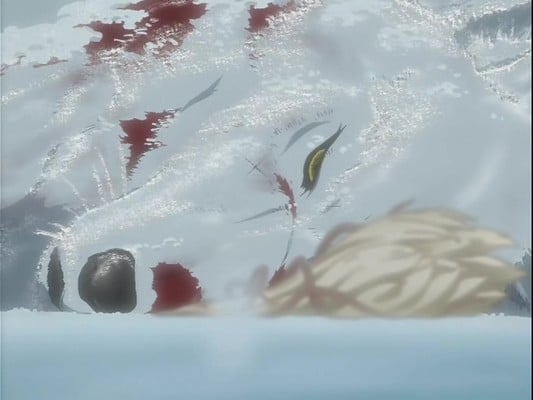
Nobumoto's final large-scale anime project would be Wolf's Rain, sometimes marketed in the West as a successor of sorts to Bebop. But despite the return of many luminaries from the 1998 series, Wolf's Rain is a decidedly different beast altogether. The show, which follows a group of dapper young men who transform into wolves, is an often obtuse blend of environmentalist sci-fi and speculative fiction. Largely open to interpretation, the series focuses on men's perpetual hunt for paradise, and the death and destruction that tend to follow in its wake.
What makes Wolf's Rain special is how different it is from Nobumoto's usual output. Like Bebop, the series is written by an eclectic team of creators that each bring their own flavors and flairs to the table. But unlike projects she'd penned so far, Rain's world and its lore was entirely of Nobumoto's own making – she takes the series' sole story credit, and is the lone creator of its overall fiction. Even the show's director, Tensai Okamura, is quick to give her that credit.
“Well, I was the director on Wolf's Rain, but the story writer was Keiko Nobumoto,” Okamura told ANN in 2017. “However, I'm not sure if we had a very full communication about all that. When Nobumoto-san wrote the story, she was sort of intrigued by the two different aspects of wolves. Being noble, you know, the dignified existence of wolves in folklore and the very violent character of real wolves, and how it's a conflicting characterization. However, from a guy's point of view, I'm not sure that I would say I really understood her intention myself.”
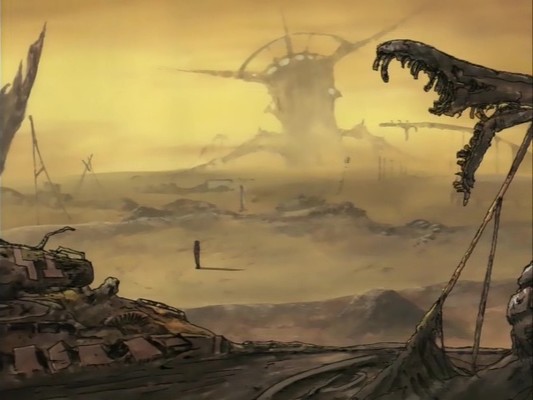
Wolf's Rain is, perhaps, the series that elucidates Nobumoto's worldviews better than any of her other creations. In it, the narrative punishes men who colonize and commodify femme bodies, and parallels their patriarchal desires with the same inclinations that cause wars and pollute the planet. In other words – subtext in her previous works is made text more explicitly than ever here. Sometimes critiqued for its complexity and alleged inscrutability, Wolf's Rain best exposes the ideological and philosophical depth of Nobumoto, while never straying too far from its core cast of damaged, frightened boys.
After Wolf's Rain, Nobumoto would not helm a full anime again. Over the years, she contributed scripts to Samurai Champloo, Space Dandy, and Carole & Tuesday, but largely continued to work in live-action film and television. Interviews with Nobumoto are sparse, and it's unclear if dissatisfaction with Wolf's Rain's ending (the series was forced to wrap up in an OVA, as the television run had to accommodate four recap episodes) instilled her with a reluctance to work on a full series again. Whatever the case may be, most Western anime fans stopped hearing from Nobumoto after Wolf's Rain, with only the aforementioned Watanabe productions giving us all-too-brief returns to her immaculate scriptwork.
While it's easy to rue the fact that Keiko Nobumoto's bibliography is as short as it is, one has to consider the weight of her output when discussing. Macross Plus helped sustain the '80s OVA boom into the '90s. Cowboy Bebop introduced an entire generation of Western fans to the medium. Tokyo Godfathers is remembered as not only one of Satoshi Kon's best, but a vital queer anime. And Wolf's Rain has enjoyed reappraisal, in recent years, on its own terms – divorced from the hype of Cowboy Bebop. It's also worth noting that Nobumoto wrote the scenario and contributed to the first two Kingdom Hearts games – one of the most prolific video game series of all time, with an expansive and complicated lore that is rooted firmly in Nobumoto's ideas.
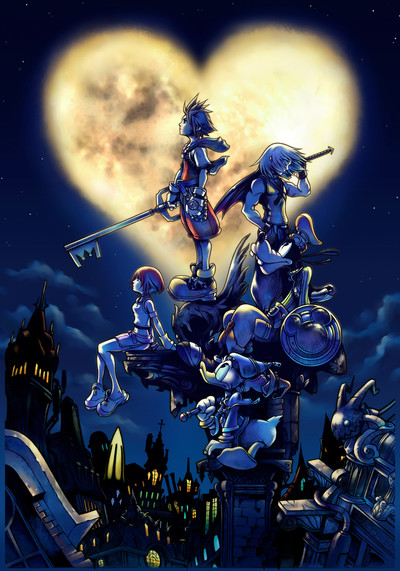
In other words, Nobumoto's influence can't be properly measured in raw output – like most great artists. Instead, it is much more ingenious to look at each individual series, movie, and game that she lent her talents to, and trace the influence of those things on their respective mediums. Cherished by all who worked with her, Nobumoto's reputation as a delicate humanist with radical ideas about the intersection of gender, politics, and environmentalism put her behind the wheel of series that we're still talking about decades later. She moved the needle when it came to the medium's discussion of social issues, and was never afraid to center women and male vulnerability in a masculinity-dominated industry.
There will never be another like Keiko Nobumoto. But there will be thousands that try.
discuss this in the forum (8 posts) |